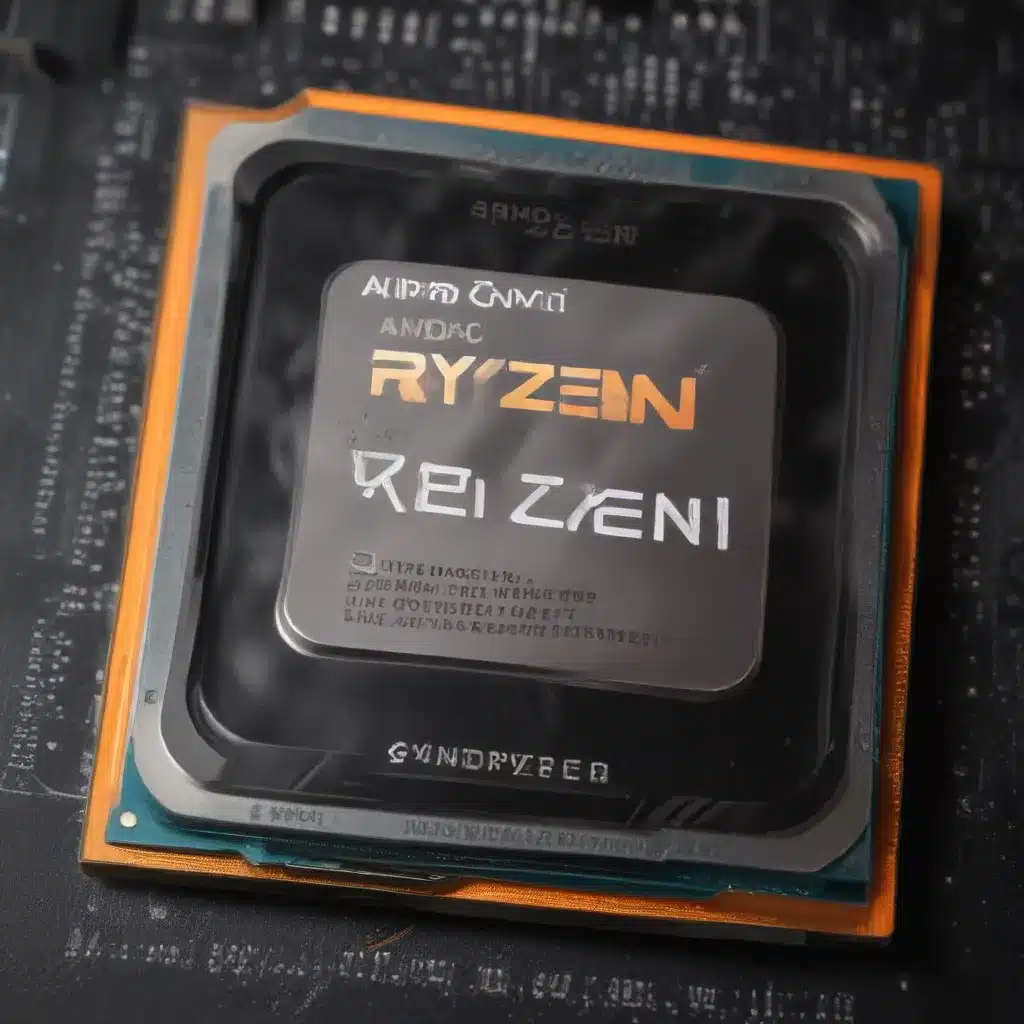
Unlocking the True Potential of AMD’s Latest Processors
As an experienced IT professional, I’ve seen firsthand the remarkable advancements in AMD’s Ryzen CPU lineup over the years. The latest Ryzen 7000 series, built on the cutting-edge Zen 4 architecture, has taken the performance game to a whole new level. But for those seeking to push the boundaries even further, overclocking these powerful processors, combined with high-performance DDR5 memory, presents an exciting opportunity to unlock even greater levels of computing prowess.
In this comprehensive guide, we’ll delve into the intricacies of overclocking AMD Ryzen 7000 CPUs, exploring the latest techniques and strategies to maximize their potential while keeping a keen eye on stability and thermals. Whether you’re a seasoned overclocker or a curious enthusiast, this article will equip you with the knowledge and confidence to embark on your own Ryzen 7000 overclocking journey.
Understanding the Ryzen 7000 Ecosystem
Before we dive into the overclocking process, it’s essential to understand the underlying architecture and capabilities of the Ryzen 7000 series. These processors, powered by the Zen 4 microarchitecture, offer a significant leap in performance compared to their predecessors, thanks to a range of enhancements.
One key aspect that sets the Ryzen 7000 CPUs apart is their support for the latest DDR5 memory standard. With DDR5’s higher frequencies and improved bandwidth, the potential for unlocking even greater performance through overclocking becomes increasingly tantalizing.
As we’ll explore in the coming sections, the Ryzen 7000 series presents a unique set of challenges and considerations when it comes to overclocking, particularly with the integration of the Infinity Fabric and its relationship with the memory subsystem. Navigating these nuances will be crucial to achieving stable and reliable overclocked performance.
Pushing the Infinity Fabric to New Heights
The Ryzen 7000 series’ Infinity Fabric, the interconnect that links various components within the CPU, plays a critical role in overall system performance. Optimizing the Infinity Fabric’s clock speed is a crucial step in the overclocking process, as it directly impacts the communication between the CPU cores, cache, and memory.
According to Buildzoid, a renowned overclocker and hardware enthusiast, the Infinity Fabric in the Ryzen 7000 processors can be pushed to remarkable frequencies, even exceeding 2.5 GHz. However, this feat requires careful tuning and a deep understanding of the underlying relationships between the Infinity Fabric, memory, and CPU clock speeds.
One key consideration is the need to maintain a balanced ratio between the Infinity Fabric clock and the memory clock. Pushing the Infinity Fabric too high without corresponding memory speed adjustments can lead to instability and performance degradation. Striking the right balance is essential for achieving a stable and optimized overclocked system.
Mastering DDR5 Overclocking
The introduction of DDR5 memory in the Ryzen 7000 series opens up new frontiers for overclocking enthusiasts. With the potential for significantly higher frequencies and improved memory latency, DDR5 can be a powerful ally in the quest for maximum performance.
However, overclocking DDR5 memory is not without its challenges. As highlighted in the Reddit discussion, some users have reported difficulties in achieving stable operation at the highest DDR5 speeds, such as the 6400 MHz kit mentioned. Careful tuning of various memory timings and voltages is often required to ensure stability and reliability.
To overcome these obstacles, it’s crucial to understand the nuances of DDR5 overclocking. Experimenting with different memory kits, adjusting DRAM voltage, and fine-tuning subtimings can all play a role in unlocking the full potential of your DDR5 memory. Additionally, leveraging the latest overclocking tools and community resources can provide valuable insights and guidance throughout the process.
Balancing Performance and Thermals
One of the primary concerns when overclocking any high-performance CPU is managing the resulting heat output. The Ryzen 7000 series, with its advanced 5nm manufacturing process and increased power draw, can generate significant amounts of heat under heavy loads, particularly during demanding workloads like 3D rendering or video encoding.
As highlighted in the AMD community discussion, the Ryzen Threadripper 7980XE, a powerful HEDT (High-End Desktop) processor, can reach temperatures of up to 93-94°C under full load. While this falls within the maximum operating temperature specified by AMD, it’s crucial to maintain a delicate balance between performance and thermal management to ensure the long-term reliability and stability of your overclocked system.
Strategies such as optimizing case airflow, upgrading to a high-performance liquid cooler, and potentially disabling AMD’s Precision Boost Overdrive (PBO) feature can all play a role in keeping temperatures in check. Additionally, monitoring CPU temperatures and adjusting overclock settings accordingly is key to finding the sweet spot between performance and thermal constraints.
Navigating the Overclocking Journey
Embarking on the overclocking journey with AMD Ryzen 7000 CPUs and DDR5 memory can be an exhilarating and rewarding experience for tech enthusiasts. By understanding the nuances of the Infinity Fabric, mastering DDR5 overclocking techniques, and carefully balancing performance and thermals, you can unlock unprecedented levels of computing power from your Ryzen 7000 system.
Remember, overclocking is an iterative process that requires patience, attention to detail, and a willingness to experiment. Stay vigilant in monitoring system stability, temperatures, and any potential performance bottlenecks. Leverage community resources, such as forums and overclocking guides, to learn from the experiences of others and refine your own overclocking strategies.
At IT Fix, we’re dedicated to providing our readers with the latest insights and practical advice on all things technology. As you embark on your Ryzen 7000 overclocking journey, feel free to explore our other articles and resources to enhance your IT knowledge and skills. Happy overclocking!












